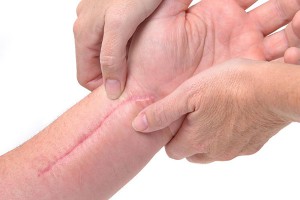
Injury can leave scars that are often more than skin deep.
Scarred. It can mean a lot of things, both physical and emotional. The physical scar can remind us of an event or process that we’d rather not have experienced. Surprisingly, improvement or elimination of the scar can bring about a kind of healing and recovery that no amount of acceptance or therapy can produce.
While scar removal procedures are often a daily routine for practitioners in our field, for the patient, the effects are often profound and life changing.
When we meet a new scarred patient, the tie between the physical and emotional is obvious. As someone tells us their story, often their fingers will drift to the scars and gently touch them as they speak. Usually emotions build and build, and we can see the weight this condition puts upon their mind and spirit. A sadness evolves, a feeling of being doomed to this situation forever.
After carefully listening to the patient about the history of the scars, and the attempts that have been made to improve them, we do a physical examination. In many cases, we can offer a significant transformation, yet in others, we cannot.
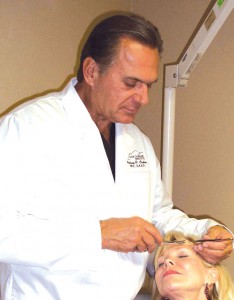
Dr. Ordon addresses a facial scar removal procedure.
Scars can be objectionable for several reasons. Factors include coloration, wideness, pigmentation (either too light or too dark), depth (either depressed or raised) and location. If a scar is in a troubling location, often we can relocate it into a fold or crease and make it less conspicuous. Most often, we recommend a “scar revision.”
Scar revision is simply cutting out the old scar and re-suturing it. One might ask, “If surgery caused the scar, how will more surgery fix it?” The answer is in the details. Several factors can be dramatically improved with good technique and tissue handling. For example, let’s say someone fell and was cut by a blunt surface. They went to the ER and were sutured up by the doctor on duty. The scar is wide and indented…and right in the middle of the forehead.
In our experience, improvement can be seen in 4 out of 5 categories that most often lead to scarring, or 80% of the time. Those categories include:
- Mechanism of injury. A scalpel in the hands of a skilled surgeon is much more delicate and precise than a blunt curb or fist.
- Delay. In trauma situations, the time between the injury and suture closure is prolonged – the trip to the ER, the waiting room, waiting for x-rays or test result, and finally the surgery repair. Hours pass. In scar revision surgery, the closure immediately follows the excision of the old scar.
- Technique. Technique applied in trauma situations tends to differ greatly from that of a planned procedure by a physician trained in cosmetic surgery. We focus on releasing local tissues so there is less tension on the wound in the healing phase, as tension leads to wide scars. We use “atraumatic technique,” which means treating tissue gently and exposing the skin to a minimum of manipulation, dryness and heat, while using delicate, sharp instruments that cut cleanly without crushing or traumatizing vital tissue.
- Wound care. Plastic surgeons tend to use smaller sutures and more of them. That way we can remove half of the sutures early, which allows better blood flow and oxygenation of the wound edges. Patients are also followed closely and seen every few days post-surgery, which may not have happened after your original occurrence.
- Genetics and environmental factors. This is the one area we cannot control. Genetic ability to heal varies from person to person and despite all our efforts, it can shoot us in the foot. Also, smoking or poor hygiene can sabotage an otherwise perfect operation. For elective surgery, we suggest smoking cessation a month before surgery and can only hope that a patient is compliant.
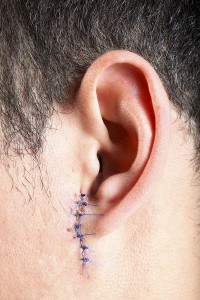
Removing scars can help remove negative memories and restore character.
Clearly, gathering a thorough and detailed history is vital before choosing a course in scar revision. Often laser therapy is the best course as lasers can substantially improve coloration of scar tissue with virtually no recovery. Intense Pulse Light Therapy can also eliminate the enlarged blood vessels that make some scars conspicuous.
If you have disconcerting scars, there are options to consider. With so many advances in technique and technology, there is absolutely no reason for those with concerns to live life scarred.
Dr. Chopra is medical director of The Plastic Surgery Institute in Rancho Mirage and can be reached at (760) 568.2211. Please send your ideas and recommended topics for his column via email to csmith@roxsurgery.com.






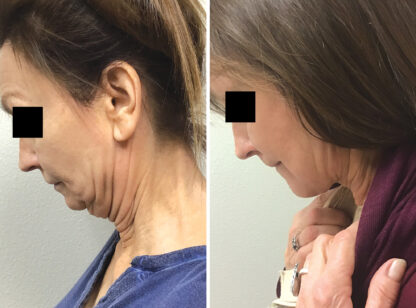



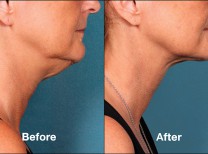
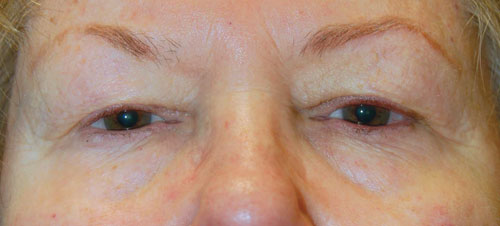
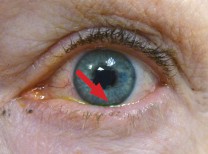






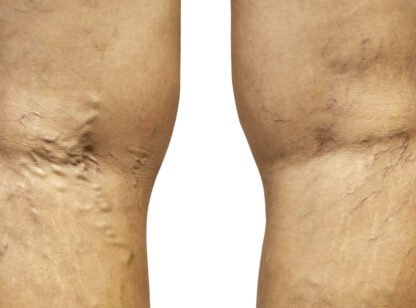






























Comments (0)